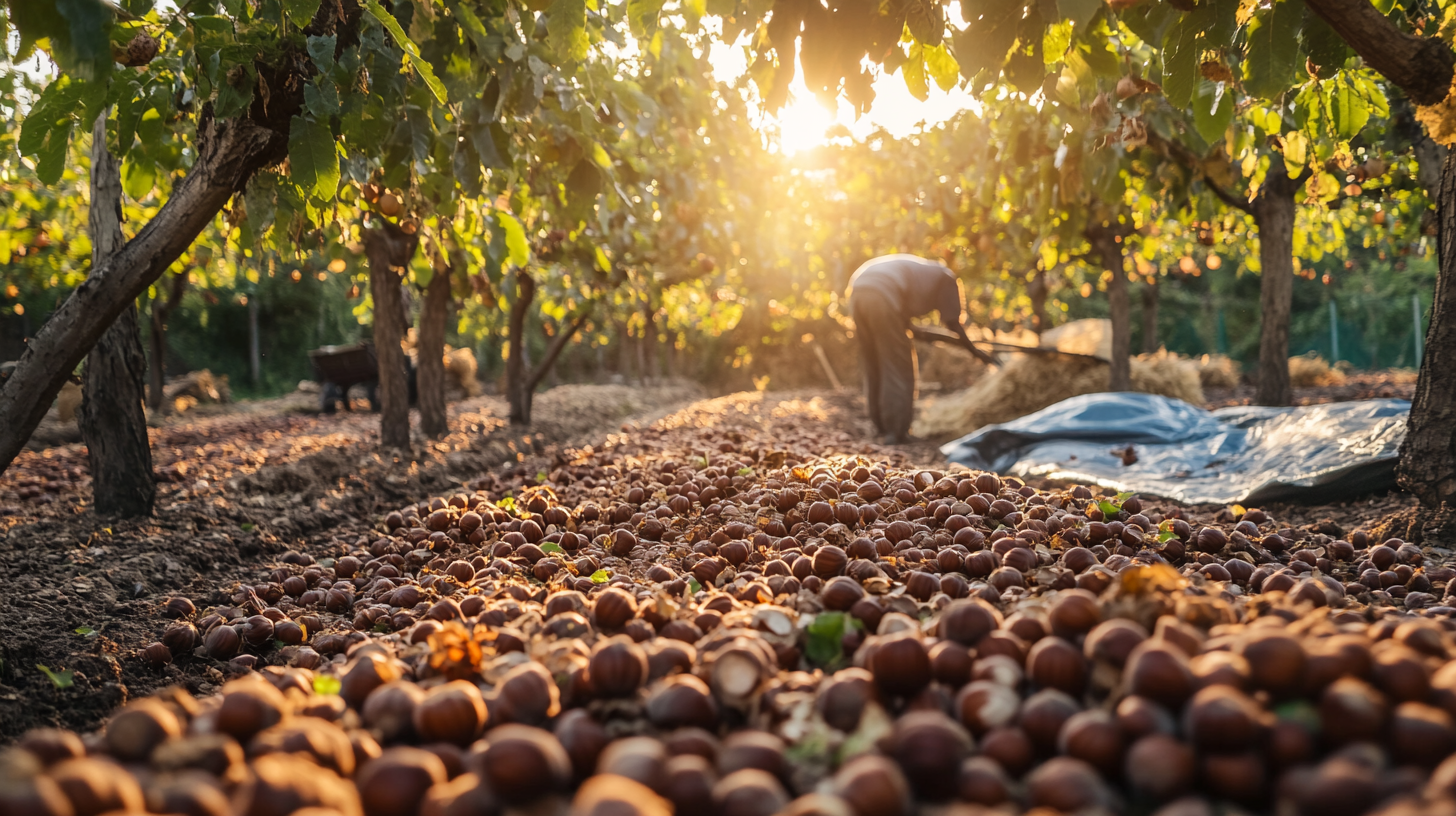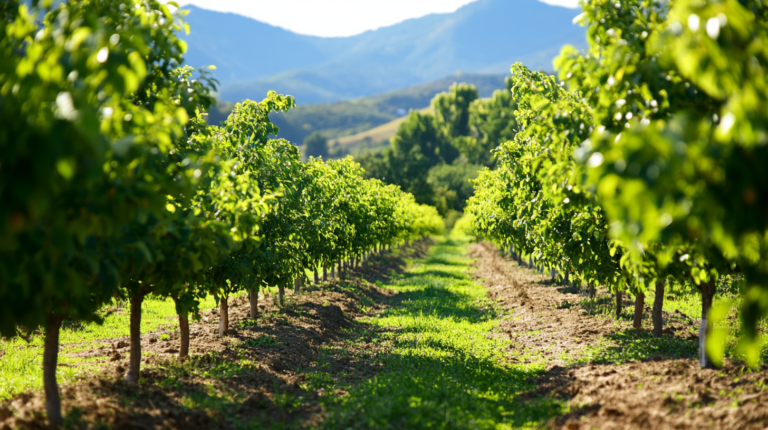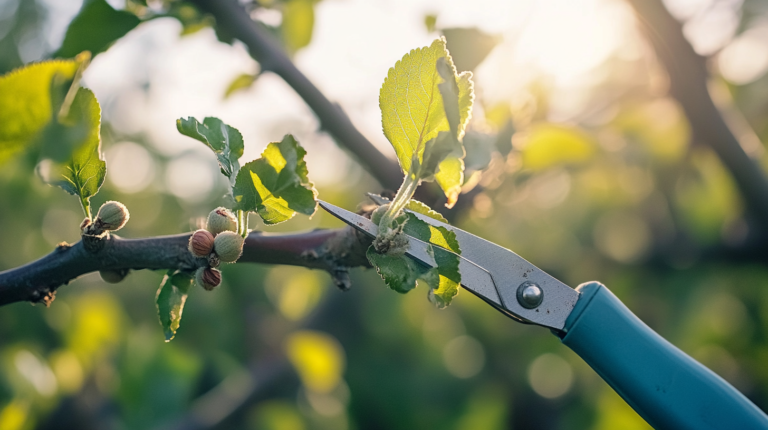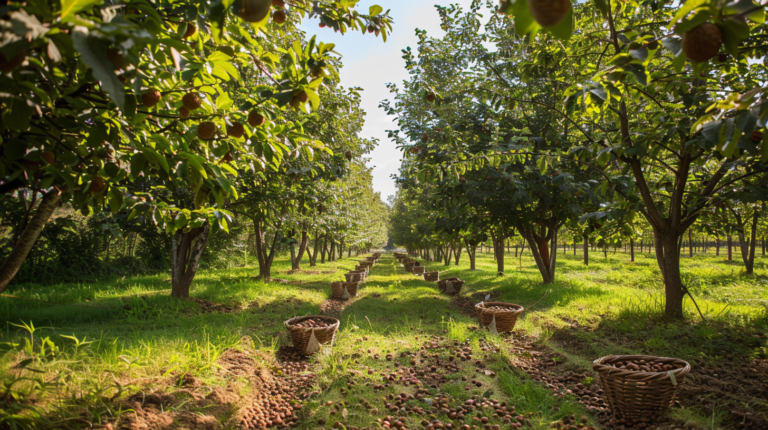The Best Timing and Techniques for Harvesting Hazelnuts
Hazelnuts, also known as filberts, are a delicious and nutritious nut that can be harvested from both cultivated orchards and wild shrubs. Understanding the proper timing and techniques for harvesting hazelnuts is crucial to ensure the best quality and yield. This comprehensive guide will cover everything you need to know about harvesting hazelnuts, from identifying the right time to pick them to the various methods of collection and processing.
Timing the Harvest
The timing of hazelnut harvest is critical for obtaining the best quality nuts. While there may be slight variations depending on the specific location and climate, hazelnuts are generally harvested from late August to October1 2.
– Signs of Readiness
To determine the optimal time for harvesting, look for the following signs:
- Nut color: The nuts will turn from green to brown as they mature.
- Husk appearance: The leafy husk (involucre) surrounding the nut will begin to turn brown and dry out.
- Falling nuts: Ripe hazelnuts will naturally fall from the tree or shrub.
It’s important to note that not all nuts on a single tree or shrub will ripen at the same time. The ripening process typically occurs over a period of about six weeks2.
– Early vs. Late Harvesting
While it might be tempting to wait until all nuts have fallen, there are several reasons to consider harvesting earlier:
- Pest prevention: Early harvesting can help prevent damage from squirrels, birds, and other wildlife.
- Quality control: Nuts that remain on the ground for too long may become moldy or rotten.
- Weather considerations: Harvesting before autumn rains can prevent moisture-related issues2.
Some foragers recommend checking wild hazelnuts as early as late July or early August, especially in warmer climates3. Domesticated varieties may ripen slightly later, but it’s always best to start monitoring your hazelnut plants in late summer.
Harvesting Techniques
Once you’ve determined that your hazelnuts are ready for harvest, there are several methods you can employ to collect them.
– Ground Collection
The most common and straightforward method of harvesting hazelnuts is simply collecting them from the ground. This technique works well for both cultivated and wild hazelnuts.
- Prepare the area: Before the nuts begin to fall, mow or clear the area around the hazelnut trees or shrubs. This will make it easier to spot and collect fallen nuts2.
- Use tarps or nets: Place tarps or nets under the trees to catch falling nuts. This method can save time and effort in collection5.
- Rake and gather: Use a rake to gather fallen nuts into piles for easier collection.
- Hand-picking: For smaller harvests or wild foraging, hand-picking fallen nuts is a viable option.
(For more information on ideal soil conditions for growing hazelnuts, check out The Best Soil Types for Growing Hazelnuts: A Comprehensive Guide.)
– Tree Shaking
To encourage nuts to fall, you can gently shake the branches of the hazelnut tree or shrub. This method is particularly useful for harvesting nuts that are ripe but haven’t fallen naturally1.
- Use a long pole or stick to gently tap branches, causing ripe nuts to fall.
- Be careful not to damage the tree or unripe nuts still on the branches.
- Collect fallen nuts immediately to prevent wildlife from getting to them first.
– Cluster Picking
For wild hazelnuts or when harvesting before the nuts have fully ripened, you can pick entire clusters directly from the shrub.
- Look for clusters of nuts where the husks are beginning to turn brown.
- Gently twist the cluster to remove it from the branch5.
- This method is particularly useful when foraging, as it allows you to beat wildlife to the nuts3.
Post-Harvest Processing
After collecting your hazelnuts, there are several steps you should take to ensure they are properly processed and stored.
– Husking
- Remove the leafy husk (involucre) from around the nut. This can often be done by hand, especially if the nuts are fully ripe1.
- For nuts with stubborn husks, you can try the following methods:
– Cleaning and Sorting
- Rinse the husked nuts to remove any dirt or debris.
- Conduct a float test: Place the nuts in water and discard any that float, as these are likely empty or of poor quality2.
- Inspect the nuts for holes, which may indicate insect infestation, and discard any affected nuts2.
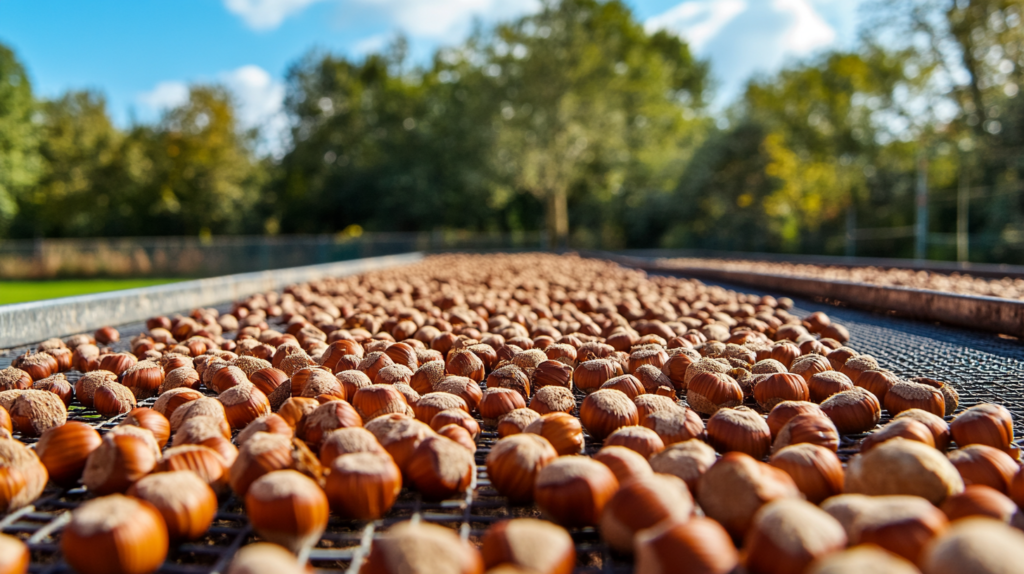
– Drying
Proper drying is crucial for long-term storage and to prevent mold growth.
- Spread the nuts in a single layer on a screen or mesh drying rack to allow for good air circulation4.
- Place the nuts in a warm, dry area with temperatures between 90-105°F (32-40°C)2.
- Stir the nuts daily to ensure even drying.
- The drying process typically takes 2-4 weeks when air-drying naturally2.
To speed up the drying process:
- Use a food dehydrator set to 90-105°F (32-40°C) for 2-4 days2.
- Shell the nuts before drying to significantly reduce drying time2.
– Storage
Once the hazelnuts are thoroughly dried, they can be stored for several months.
- Store unshelled nuts at room temperature in a cool, dry place.
- For longer storage, keep shelled nuts in an airtight container in the refrigerator or freezer.
Wild Foraging Considerations
When foraging for wild hazelnuts, keep the following points in mind:
- Identification: Ensure you can correctly identify hazel shrubs. They typically grow to about 8-15 feet tall and have distinctive heart-shaped leaves3.
- Timing: Wild hazelnuts often ripen earlier than cultivated varieties. Start checking for ripe nuts in late July or early August3.
- Competition: Be prepared to compete with wildlife for the nuts. Picking slightly under-ripe nuts and allowing them to finish ripening at home may be necessary5.
- Sustainability: When foraging, always practice sustainable harvesting. Leave plenty of nuts for wildlife and to ensure the continued growth of the hazel population5.
- Permission: Always obtain permission before foraging on private property, and check local regulations for foraging in public areas.
Conclusion
Harvesting hazelnuts can be a rewarding experience, whether you’re tending to your own orchard or foraging in the wild. By understanding the proper timing and techniques for harvesting, you can ensure a bountiful and high-quality yield of these delicious nuts. Remember that the exact timing may vary depending on your specific location and climate, so it’s essential to monitor your hazelnut plants closely as the harvest season approaches.
With practice, you’ll develop a keen eye for identifying the perfect moment to begin your harvest. Whether you choose to collect fallen nuts, shake the trees, or pick clusters directly, the key is to act promptly to beat wildlife to the punch and prevent quality issues that can arise from nuts being left on the ground too long.
By following the proper post-harvest processing techniques, including husking, cleaning, and drying, you’ll be able to enjoy your hazelnuts for months to come. Whether you use them in baking, as a snack, or in savory dishes, your freshly harvested hazelnuts are sure to be a delightful addition to your culinary repertoire.
Sorces:
[1] https://kinghazelnuts.com/blogs/king-fresh-our-blog/the-best-time-to-harvest-hazelnuts
[2] https://www.gardeningknowhow.com/edible/nut-trees/hazelnut/when-to-harvest-hazelnuts.htm
[3] https://honest-food.net/harvesting-wild-hazelnuts/
[4] https://landed.weebly.com/harvesting-and-storing-hazelnuts.html
[5] https://gardenerspath.com/plants/nut-trees/harvest-hazelnut/
[6] https://www.woodlandtrust.org.uk/blog/2019/08/hazelnuts-where-and-when-to-forage/
